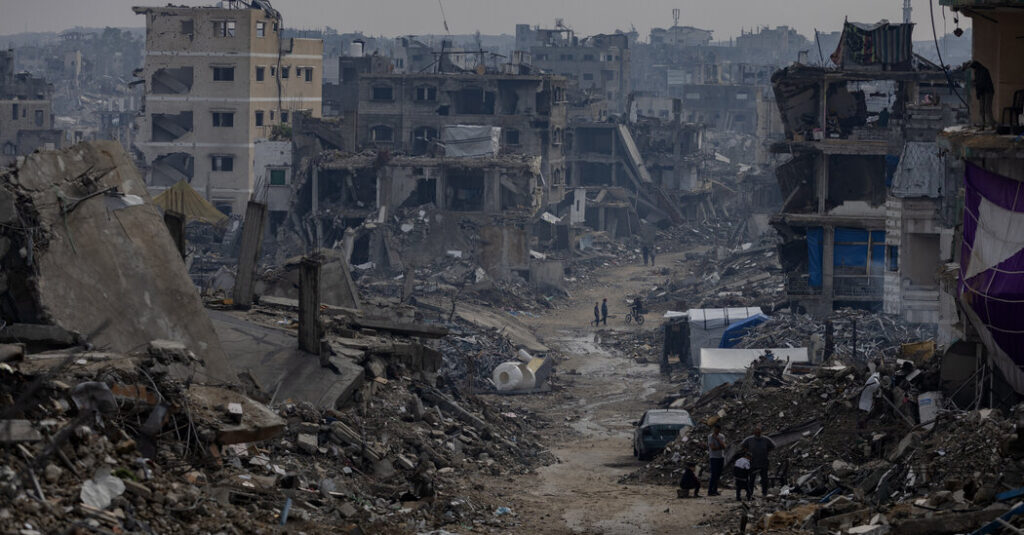The U.N. Security Council has enacted hundreds of resolutions about the Israeli-Palestinian conflict. Many have accomplished nothing.
Unlike those, the council’s vote on Monday to adopt President Trump’s peace plan for Gaza is tethered to a specific — if enormously ambitious — project in which the world’s leading superpower has already invested heavily.
Mr. Trump has made the plan’s success or failure a test of his prestige and powers of persuasion and persistence. The United States has deployed hundreds of troops, a small army of diplomats and a cavalcade of top officials to Israel to chart the way forward for Gaza and, farther out on the horizon, for resolving the Israeli-Palestinian conflict as a whole.
The question now is whether Mr. Trump and his administration, confronted with the difficulties still ahead, will have the wherewithal and staying power to see those plans through.
The Security Council’s blessing was important to the United States because it attached to the Trump peace plan a scaffolding of international legitimacy, meeting a minimum requirement of countries whose help the American administration wants in Gaza.
In particular, and most urgently, the plan calls for an International Stabilization Force to ensure the demilitarization of the Gaza Strip — Israel’s price for pulling all its troops from the territory in the future.
But there is another prerequisite for many countries that are being asked to commit forces to the demilitarization effort: being told up front whether their troops will be asked to disarm the Palestinian militant group Hamas and its thousands of surviving fighters, and knowing how they will be asked to do so, exactly, if those fighters do not readily comply.
Both Azerbaijan and the United Arab Emirates, to name two countries much discussed as likely participants, have signaled that they will not take part in the force because of the risk that their soldiers could wind up being asked to fight with Hamas.
And Hamas has made clear it will not make things easy.
The group rejected the U.N. resolution, saying on Tuesday that involving the International Stabilization Force in disarming it would turn the force into “a party to the conflict on behalf of” Israel.
The problem of demilitarizing Gaza has been staring everyone in the face all along, of course. It is so daunting that the United States has begun planning for a situation in which Hamas retains control of the western half of Gaza, and is in possession of its weaponry, while reconstruction begins in the Israel-controlled eastern half.
In effect, the U.N. resolution buys time: time for the United States to assemble the members of the stabilization force and to work out the choreography and a realistic timeline for the demilitarization of Gaza. Time to develop the cohort of Palestinian “technocrats” whom the plan imagines administering Gaza. Time to raise tens of billions of dollars to rebuild the enclave.
The problem, experts say, is that the longer it takes to make progress on each of those fronts, the more the status quo will set in, with ominous implications.
“Disarming Hamas will be a process; it will take time,” said Nimrod Novik, a veteran Israeli peace negotiator. “And if there is no further Israeli withdrawal, however limited, and no International Stabilization Force, and no beginning of reconstruction, then the temporary becomes permanent.”
“And,” he added, “we have a situation where Israel is here. Hamas is there. Each controls half the strip, and the inevitable friction will mean a resumption of fighting.”
Adam Rasgon contributed reporting.
David M. Halbfinger is the Jerusalem bureau chief, leading coverage of Israel, Gaza and the West Bank. He also held that post from 2017 to 2021. He was the Politics editor of The Times from 2021 to 2025.
The post U.N. Support Bolsters Trump’s Gaza Plan but Road Ahead Is Still Rough appeared first on New York Times.




